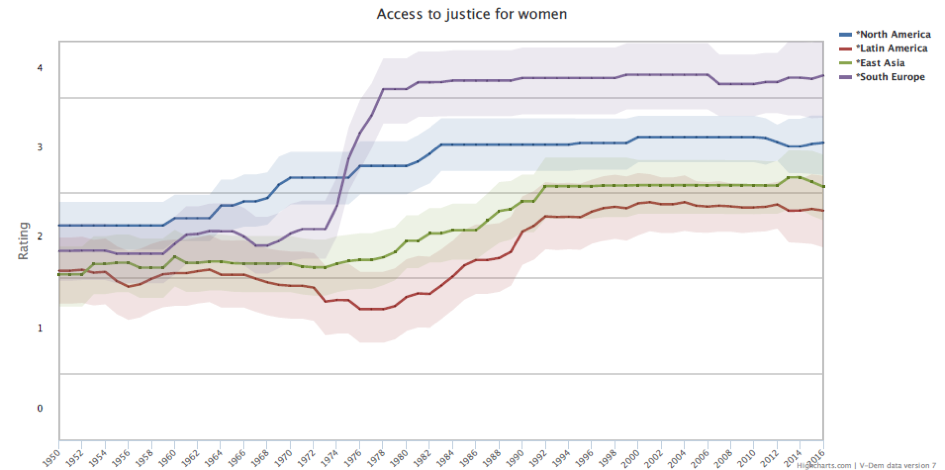Access to Justice for Women
By: V-Dem Staff
Nov 16, 2017
This fall, the “#metoo” campaign has been in the media across the globe. The campaign aims to show the magnitude of sexual assault, but also spreads light on women’s access to justice in cases of sexual assault. This week’s graph looks at women’s access to justice in a broader sense in North America, where the campaign started, South Europe, Latin America and East Asia since 1950.
V-Dem’s measure on women’s access to justice specifies the extent to which women can bring cases before the courts without risk to their personal safety. It also includes whether trials are fair, women have an effective ability to seek redress if public authorities violate their rights, including the rights to counsel, defense, and appeal.
In all regions, women’s access to justice has increased over time. North America was the first to show upward movement and took the lead in the beginning of the 1960s. This development however stagnated at a comparatively high level, where secure and effective justice for women is usually observed, but not always guaranteed. South Europe on the other hand compensated for a slower start with a steep increase in the 1970s, to a high level that indicates that secure and effective access to justice is almost always observed. In East Asia and Latin America however, despite improvement in the 1980s, scores remains on a moderate level where women are not guaranteed secure and effective access to justice.
If you want to know more about access to justice across the globe, use our online analysis tools at v-dem.net.


